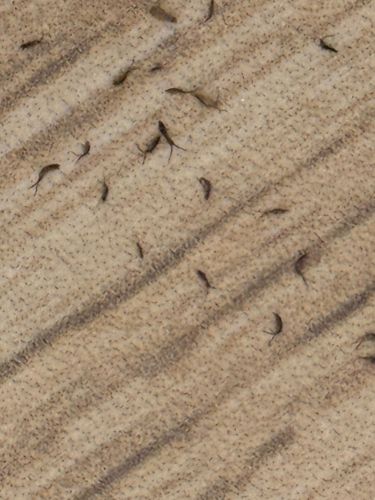Springtail
Scientific Name: Various species within Collembola
Order & Family: Order Collembola
Size: Typically 0.2 mm to 10 mm, most commonly around 1-3 mm.

Natural Habitat
Damp and high-humidity environments such as soil, leaf litter, rotting wood, under bark, in compost piles, and sometimes indoors in moist areas like bathrooms or basements.
Diet & Feeding
Mainly feed on decaying organic matter, fungi, algae, bacteria, and sometimes plant roots.
Behavior Patterns
Springtails often jump using a forked appendage called a furcula located on their abdomen, which is held under tension and released against the ground. They are attracted to damp and decaying organic matter. They reproduce rapidly in suitable conditions.
Risks & Benefits
Generally beneficial to ecosystems as decomposers, helping to break down organic matter and cycle nutrients in the soil. They are not known to bite humans or transmit diseases. While harmless indoors, large populations can sometimes be considered a nuisance, especially if found in large numbers in unexpected places.
Identified on: 8/30/2025